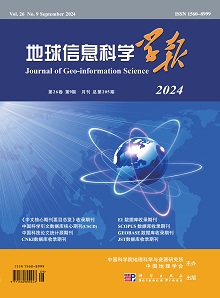基于面向服务架构的税务征管WebGIS系统
引用次数: 0
摘要
为了反映税务状况的空间分布规律和趋势在不同地区直观,形象地和动态,提高数据共享和互操作能力的异构税务管理GIS系统,税收管理基于面向服务的体系结构(SOA)的WebGIS系统由GIS企业级中间件和GIS集成的Web服务(GIServices)开放地理空间的规范联盟(OGC)。STAXGIS基于一致的业务模型和信息模型。GIS企业级中间件可以提供空间数据转换、税收业务处理、税收空间分析等高级服务功能,同时GIS服务可以提供信息服务(如税源查询与定位、税收专题分析、税收查询与申报等)。采用包含数据层、应用服务层、Web服务层和客户端层的J2EE四层框架对STAXGIS进行分层管理和部署。与传统的税务征管GIS系统相比,该系统的管理效率和可扩展性都有了很大的提高。以福建省福州市为例进行的研究表明,STAXGIS可以增强当前分布式环境下分散异构税收征管GIS平台的信息共享和互操作能力,提高异构环境下税收征管空间分析的整体效率。还可以直接或间接地为各级税务行政管理部门提供决策支持。本文章由计算机程序翻译,如有差异,请以英文原文为准。
A Tax Administration WebGIS System Based on Service-Oriented Architecture
In order to reflect the spatial distribution rules and trends of the taxation status in different regions intuitively,iconically and dynamically,improve the capability of data sharing and interoperability of the heterogeneous tax administration GIS systems,a tax administration WebGIS system based on Service Oriented Architecture(SOA) is constructed by the integration of the GIS enterprise-level middleware and GIS Web services(GIServices) on account of the specifications of Open Geospatial Consortium(OGC).STAXGIS is based on the consistent business model and information model.The GIS enterprise-level middleware can provide spatial data conversion,taxation business processing,taxation spatial analysis and other advanced service functions,meanwhile the GISservices can provide information services(such as query and location of tax sources,tax thematic analysis,taxation queries and declaring and so on).The four-layer framework of J2EE which contains the data layer,application service layer,Web service layer and client layer is used for the hierarchical management and deployment of the STAXGIS.Compared with the traditional tax administration GIS systems,the administration efficiency and scalability of the STAXGIS is greatly improved.The research which takes Fuzhou City in Fujian Province as an example has shown that STAXGIS could strengthen the capabilities of information sharing and interoperability of the decentralized heterogeneous tax administration GIS platform in the distributed environment currently,and improve the overall efficiency of spatial analysis for tax administration in heterogeneous environment.It can also provide the tax administration departments at different levels with decision support directly or indirectly.
求助全文
通过发布文献求助,成功后即可免费获取论文全文。
去求助
来源期刊
CiteScore
2.70
自引率
0.00%
发文量
3757
期刊介绍:
Journal of Geo-Information Science is an academic journal under the supervision of Chinese Academy of Sciences, jointly sponsored by Institute of Geographic Sciences and Resources, Chinese Academy of Sciences and Chinese Geographical Society, and also co-sponsored by State Key Laboratory of Resource and Environmental Information System, Key Laboratory of Virtual Geographic Environment of Ministry of Education and Key Laboratory of 3D Information Acquisition and Application of Ministry of Education. Founded in 1996, it is openly circulated in the form of a monthly magazine.
Journal of Geoinformation Science focuses on publishing academic papers with geographic system information flow as the main research object, covering research topics such as geographic information cognitive theory, geospatial big data mining, geospatial intelligent analysis, etc., and pays special attention to the innovative results of theoretical methods in geoinformation science. The journal is aimed at scientific researchers, engineers and decision makers in the fields of cartography and GIS, remote sensing science, surveying and mapping science and technology. It is a core journal of China Science Citation Database (CSCD), a core journal of Chinese science and technology, a national Chinese core journal in domestic and international databases, and it is included in international databases, such as EI Compendex, Geobase, and Scopus.

 求助内容:
求助内容: 应助结果提醒方式:
应助结果提醒方式:


